With the current rate of urbanization, land in many major cities becomes limited and therefore expensive to buy. However, often an urban grid includes many under-utilized extra-small lots that could increase the supply of affordable housing for a diverse range of lifestyles, if approached in a creative way. Seeking to unlock the development potential of such tiny vacant sites, architects design functional and flexible skinny houses that overcome the constraints of the small plots of land they are built on.
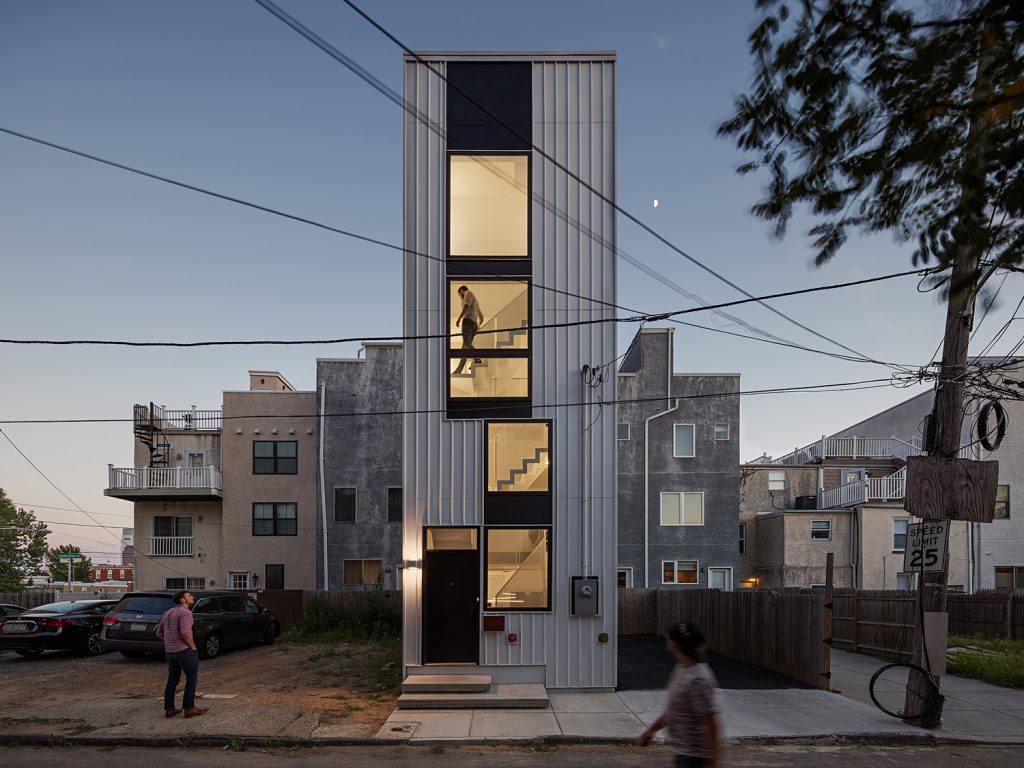
US architecture studio ISA has designed a skinny six-level house, which is organized as a full-scale skyscraper. Conceived as a housing prototype for tiny vacant lots and aptly named Tiny Tower, the design promotes vertical living for both indoor and outdoor space. The building maximises the modest 3.6 by 8.8 metres lot in both length and height. Linked by a strong core of vertical circulation, each level is similar in size and quality, allowing for flexible programming. Each floor houses a different function, with the floor space totaling 116 sqm.
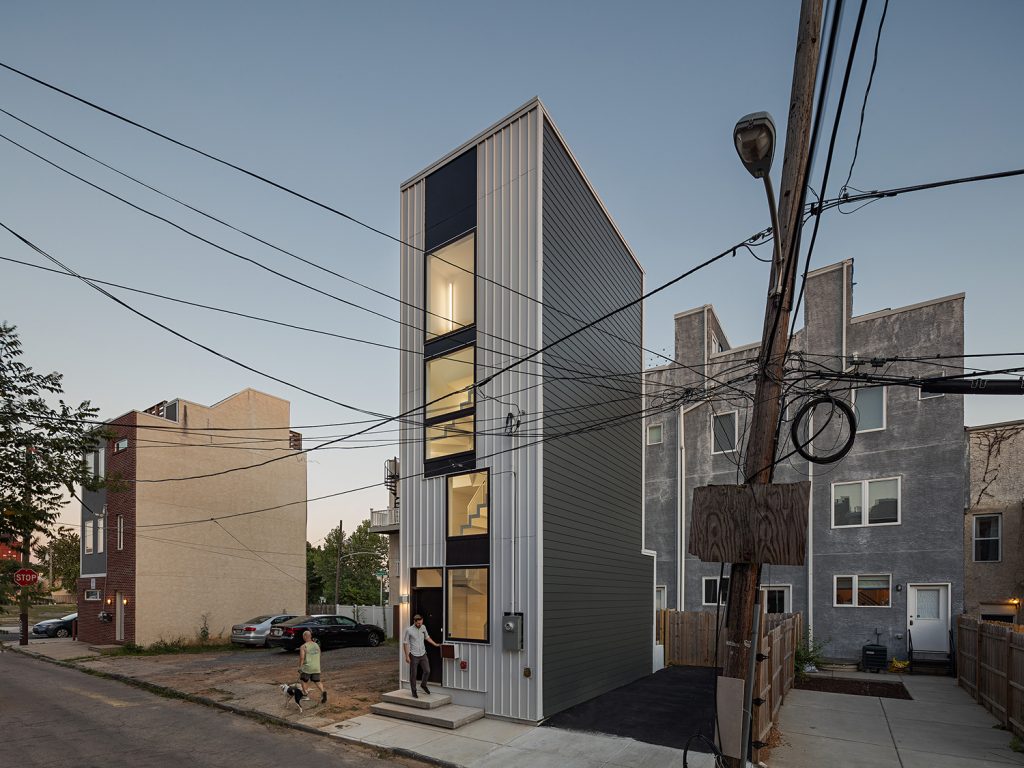
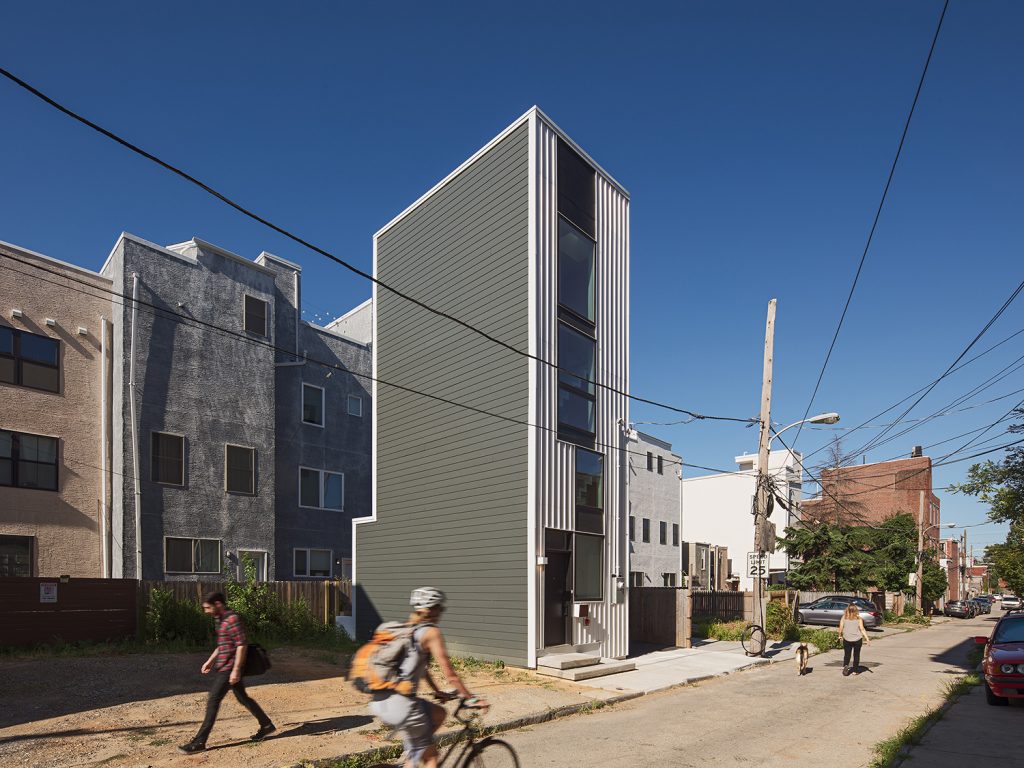
Tiny Tower by ISA (also header image)
The tiered house stands out from the surrounding structures, which include parking lots and the gardens of adjacent houses. Its steel reinforced wood frame is clad in painted metal with windows taking up large portions of the street facade. The architects have chosen to replace a yard by a lower level window garden, a second level walk out terrace and a roof deck.
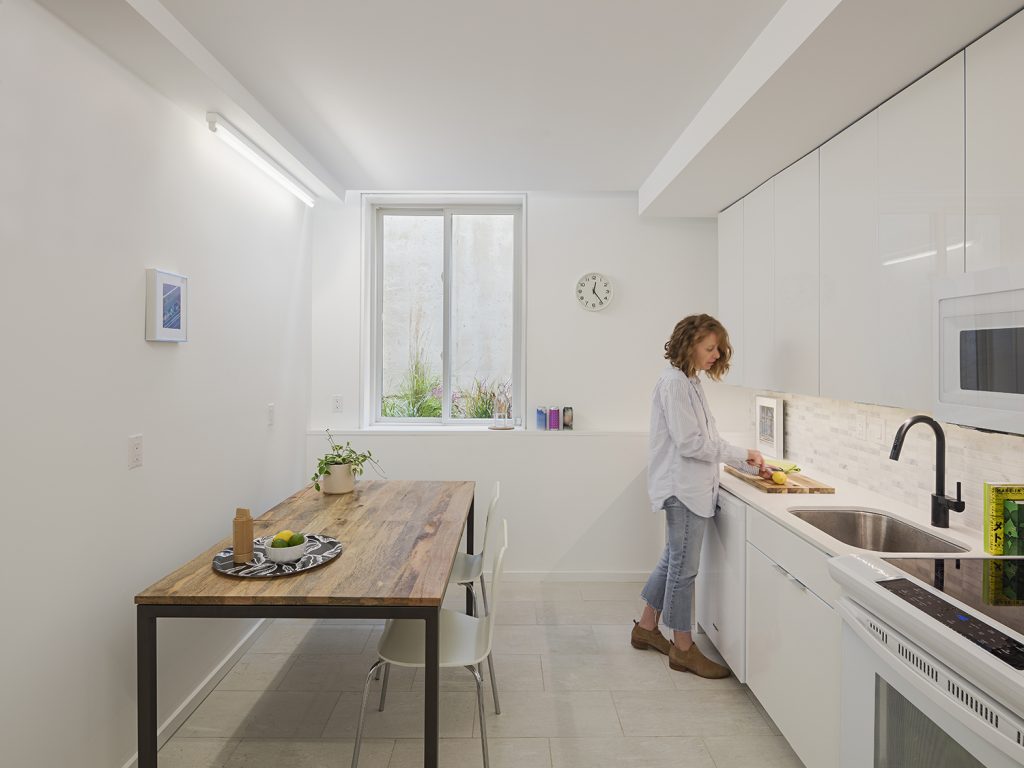
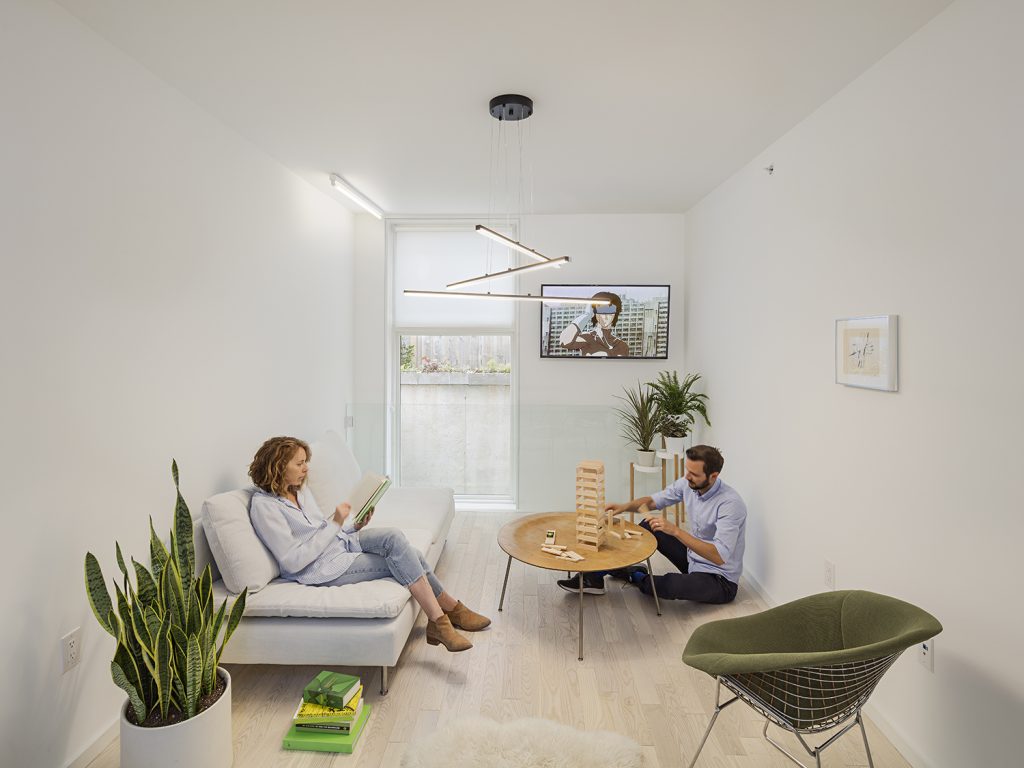
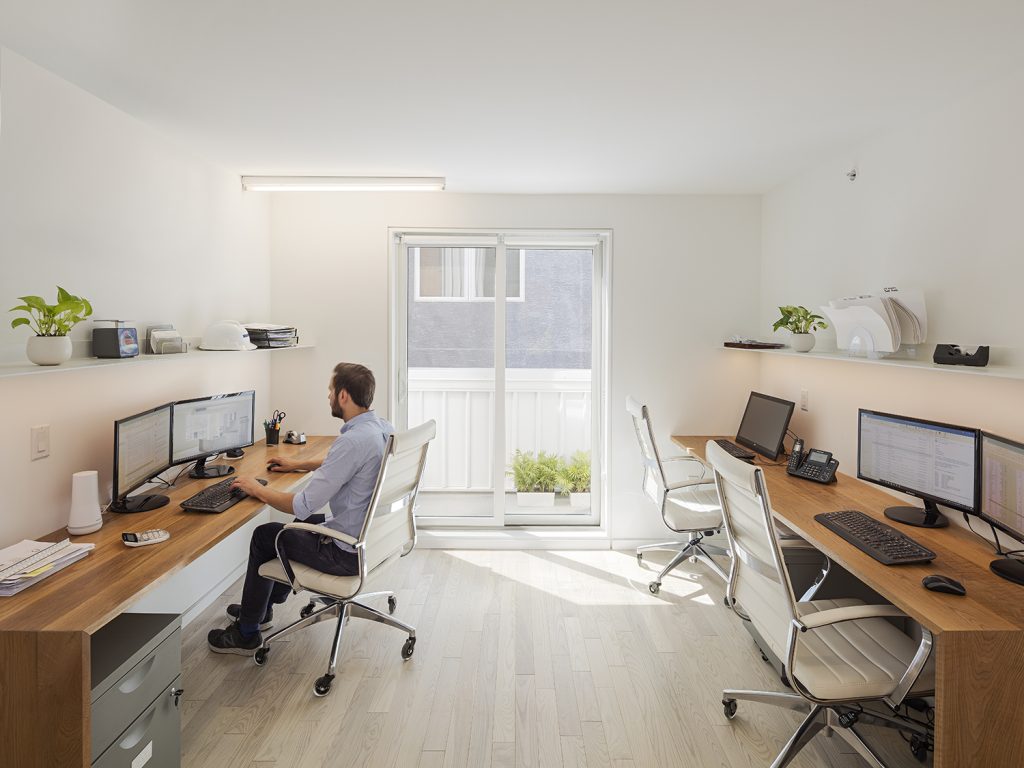
Tiny Tower by ISA
The lower level accommodates a kitchen, a living room is placed above, while the third floor is used as an office. The top two storeys each house a bedroom and bathroom. The neutral colour palette of white and light wood helps create a spacious feel inside. More living space is provided by a submerged basement level.
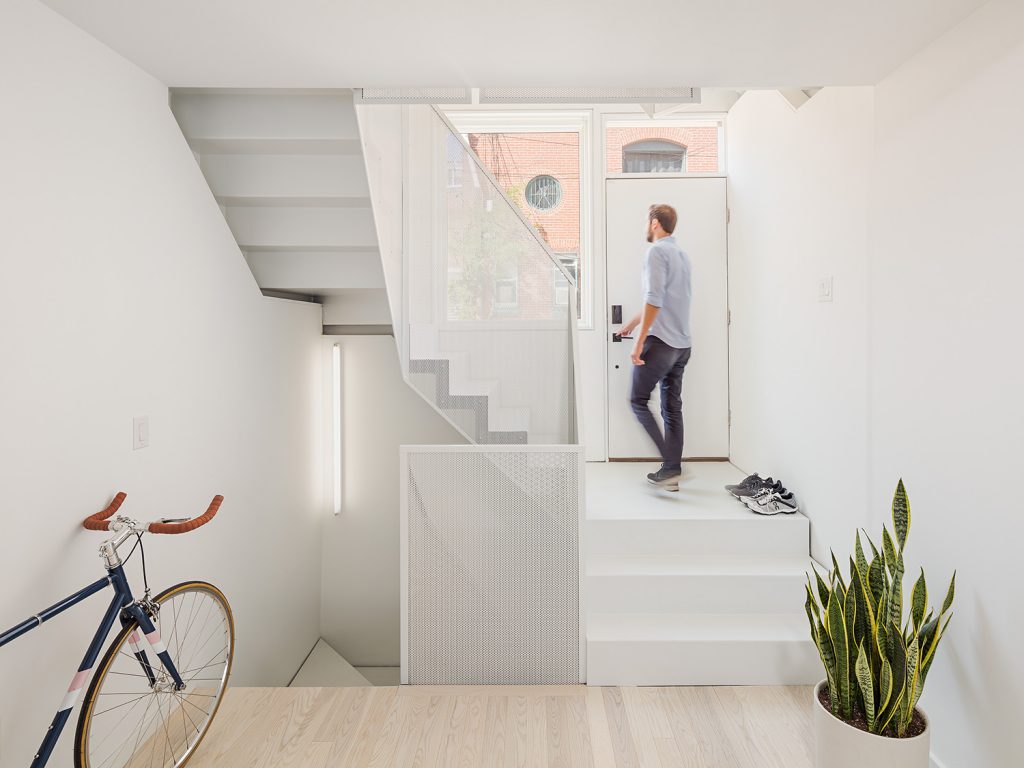
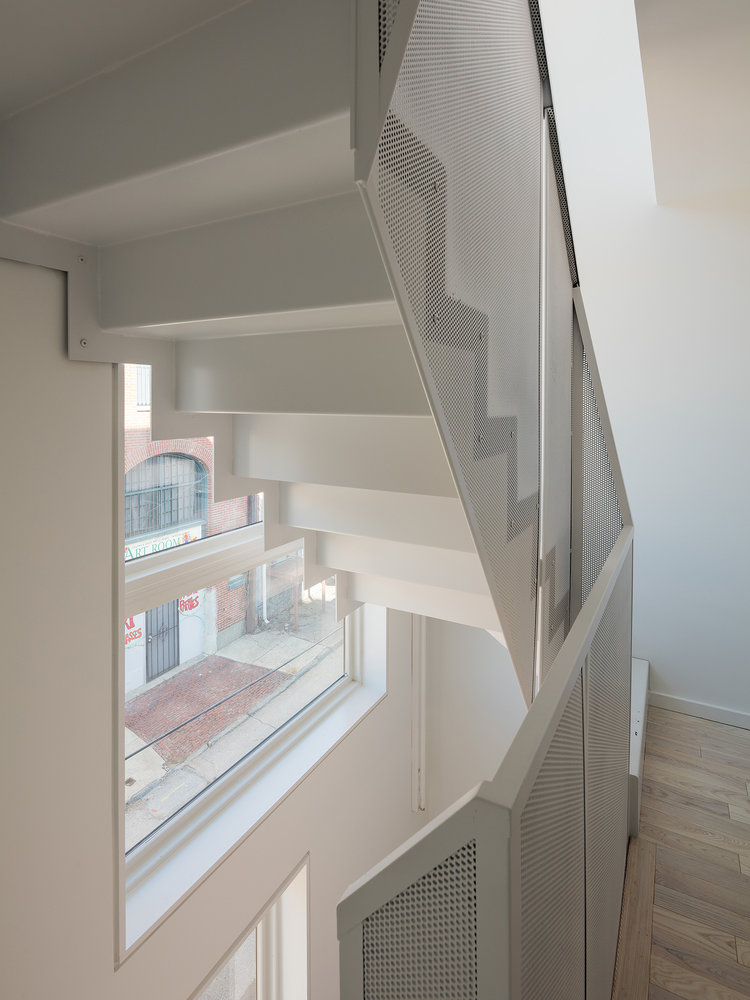
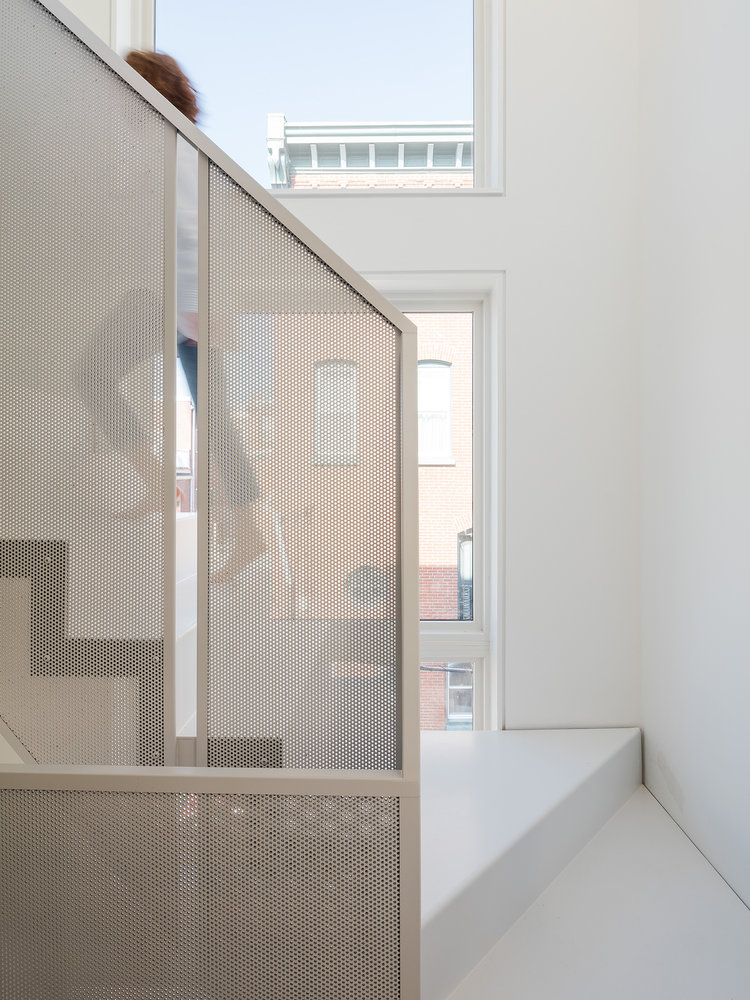
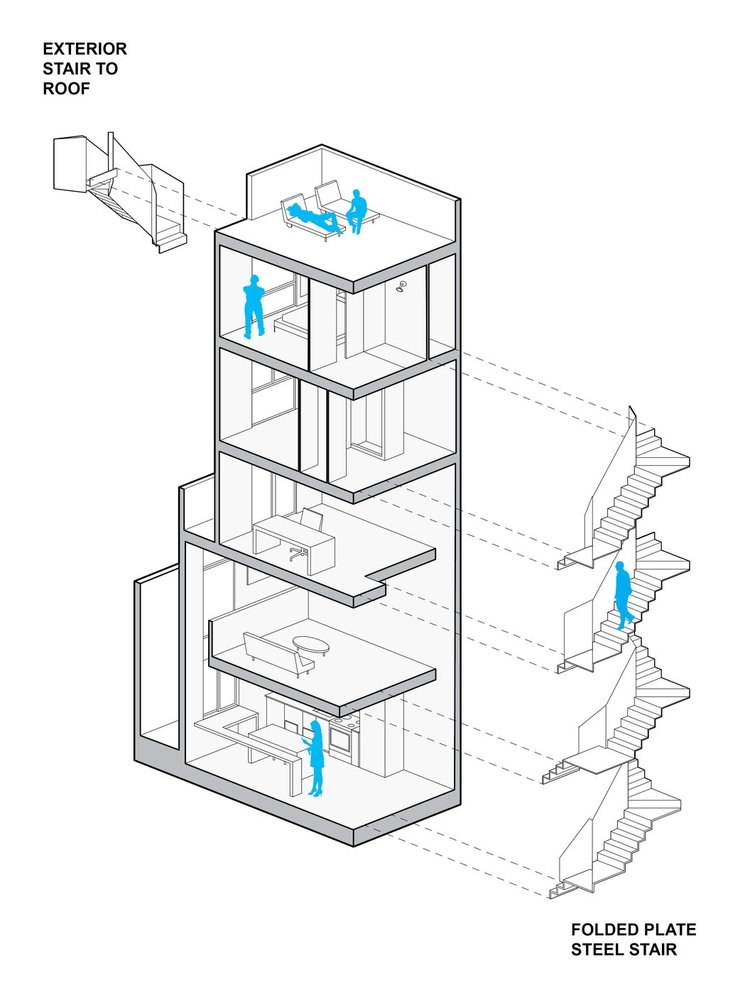
Tiny Tower by ISA
Creating stair configuration for such a skinny house with a tiny footprint was the biggest challenge, for going up and down the stairs is integral part of the daily life of the occupants. The solution features a folded-plate steel staircase at the front of the house connecting all five levels. A separate exterior stair provides access to the roof terrace providing extra living space in good weather.
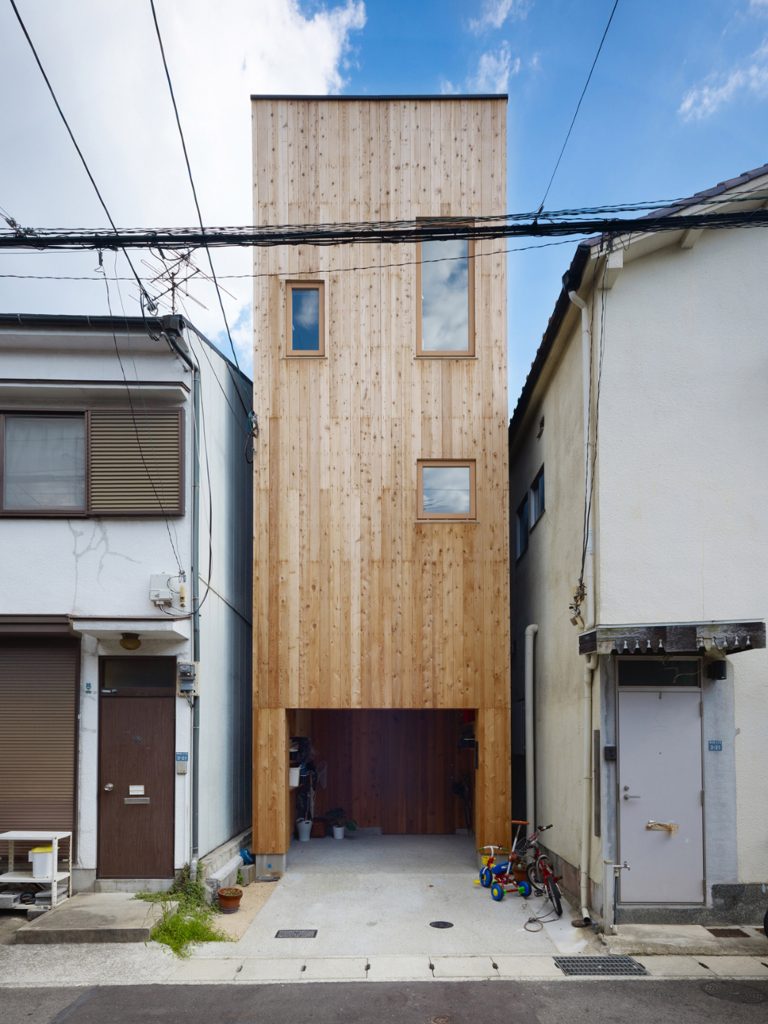
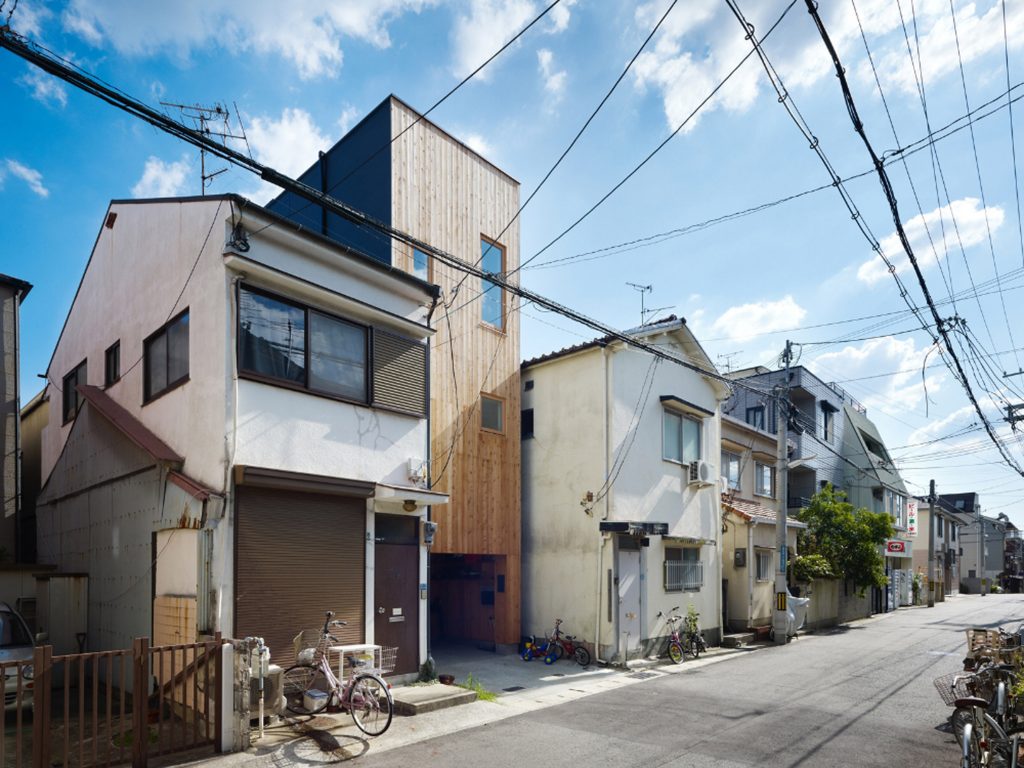
Tiny House in Kobe by FujiwaraMuro Architects
Restricted urban sites are common in many Japanese cities. Given to work with a site of just 22 square metres flanked on either side by existing residential buildings, Japanese studio FujiwaraMuro Architects has completed an exceptionally narrow timber house in Kobe. Aptly titled Tiny House in Kobe, the resulting property is 63 sqm measuring less than three metres wide.
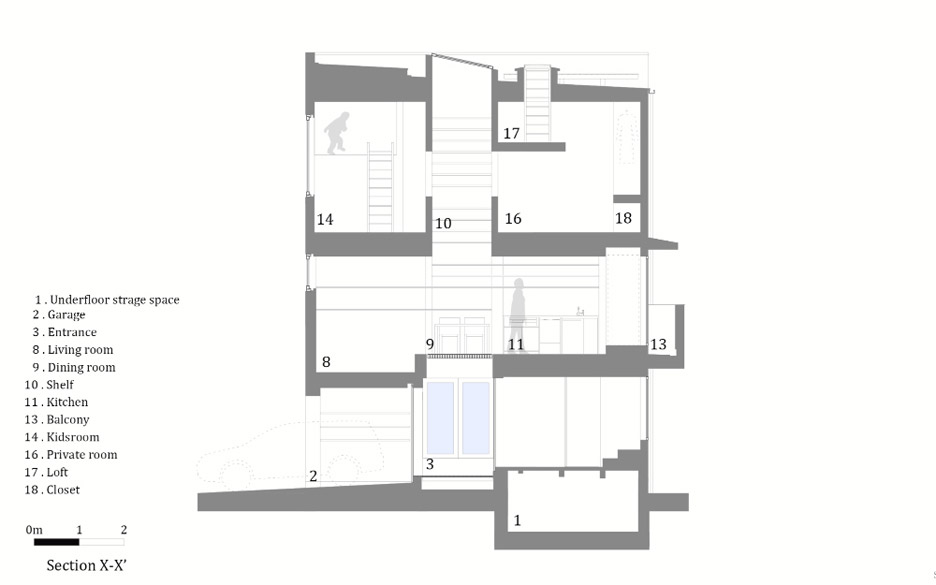
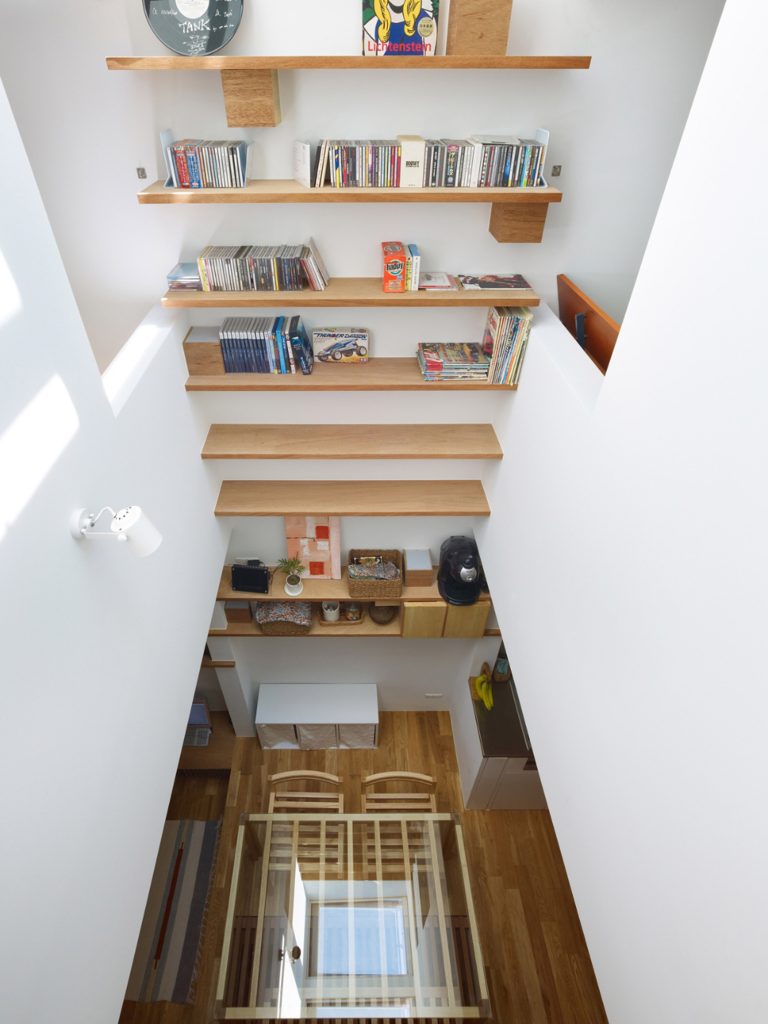
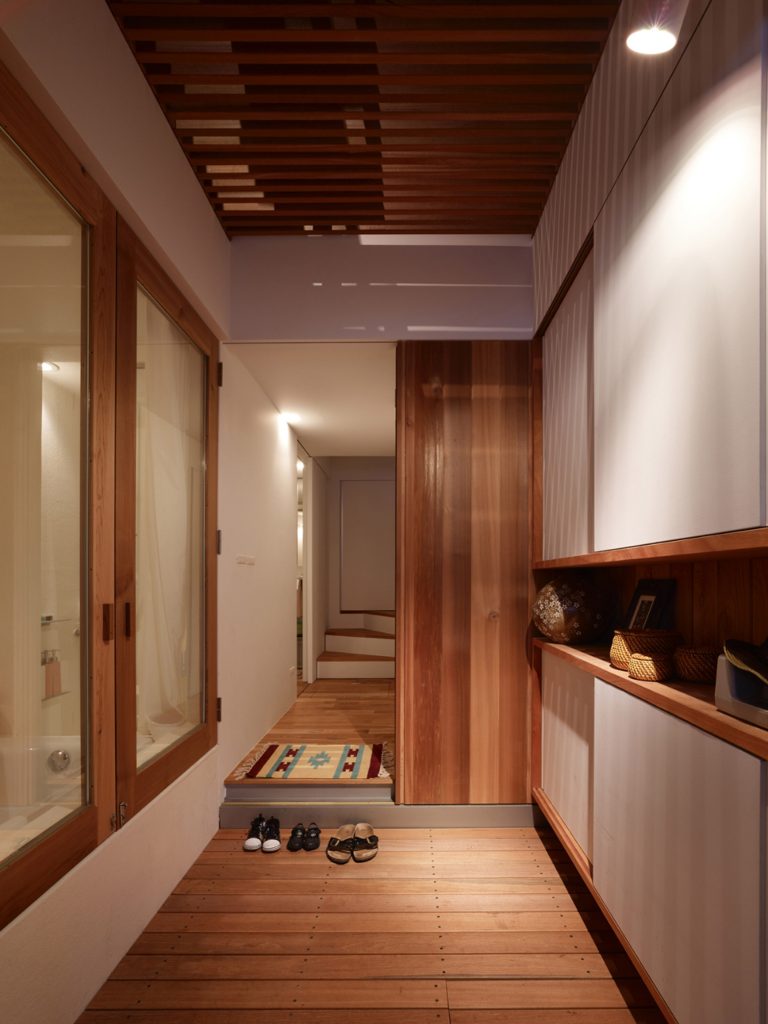
Tiny House in Kobe by FujiwaraMuro Architects
The exterior of the building is clad in boards of knotted timber, interrupted only by three windows of varying dimensions set at different heights to frame views of the surrounding cityscape and a large opening on the ground floor forming a garage.
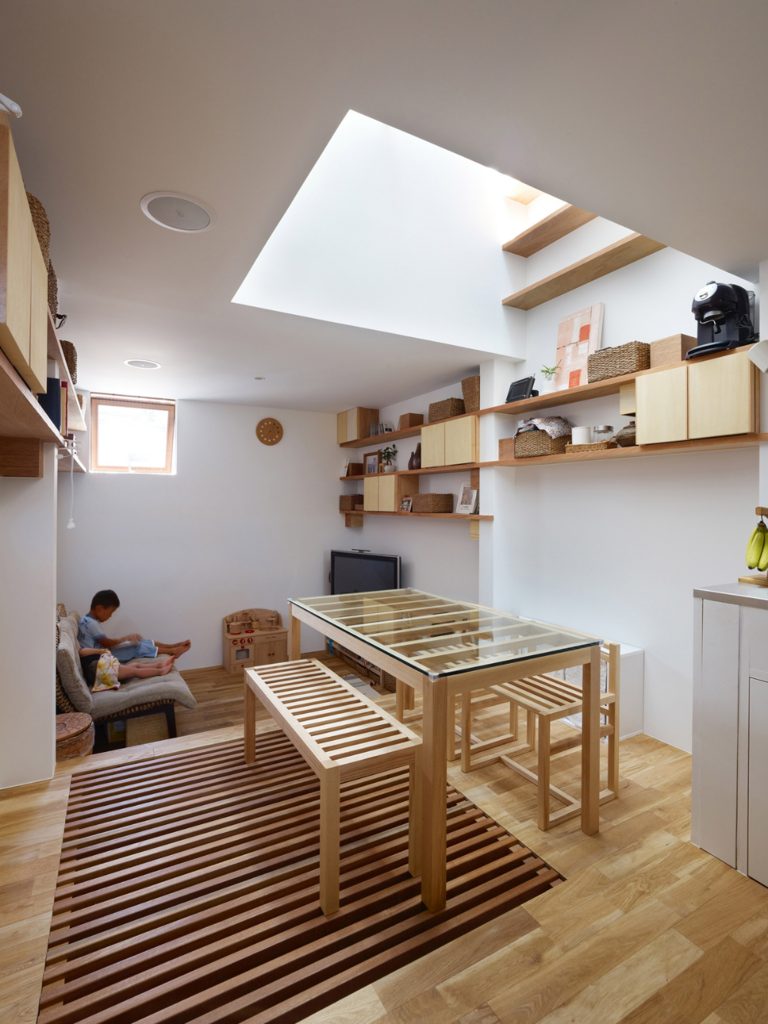
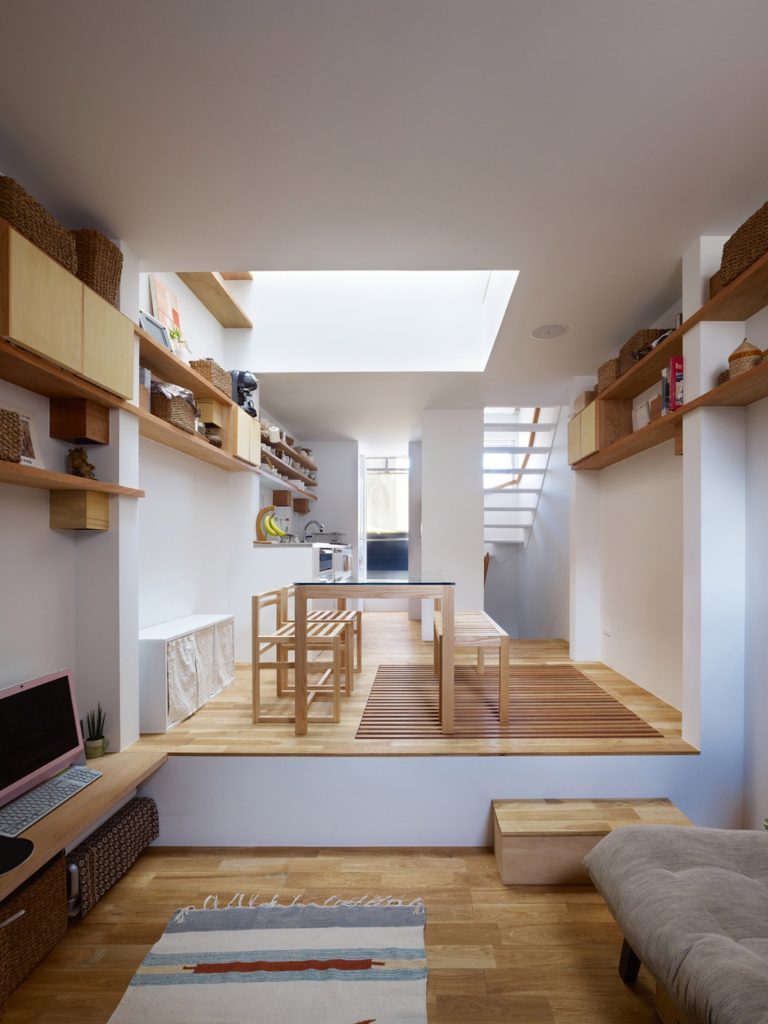
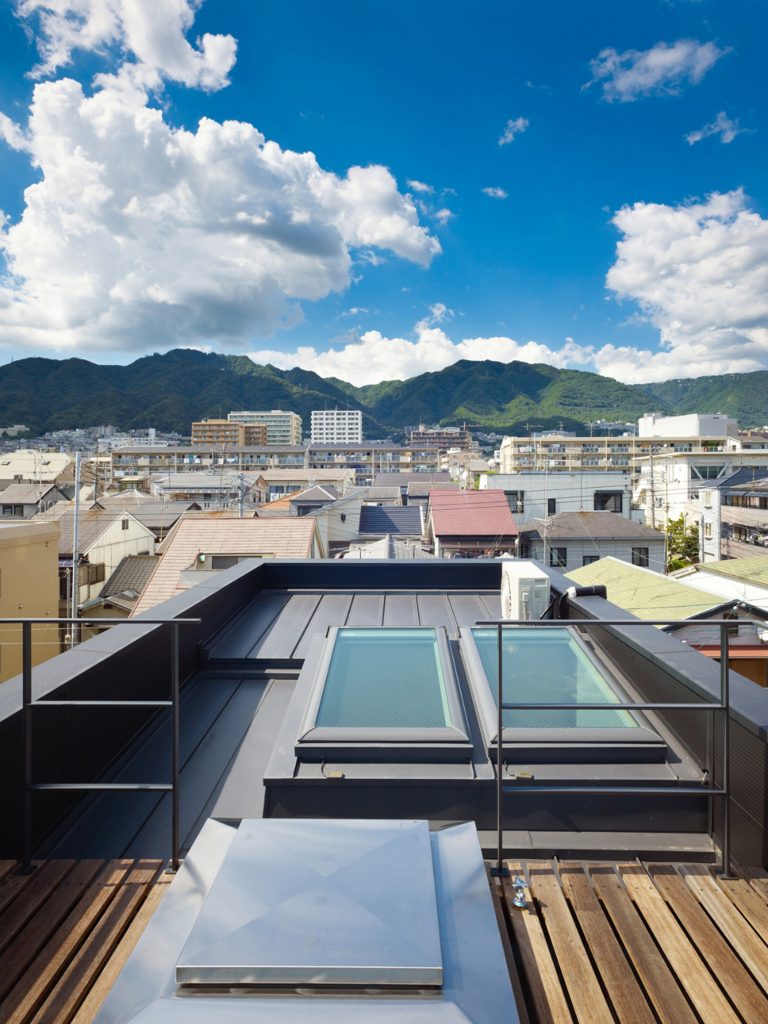
Tiny House in Kobe by FujiwaraMuro Architects
Each space in the house is linked to the others by openings or windows to create areas with adjustable levels of privacy. The ground floor houses a hallway, a bath and shower room as well as a toilet. The staircase at the far end leads to the upper floors, where a kitchen, dining space, main bedroom and a child’s room are located correspondingly. The central atrium allows daylight to reach each of the building’s levels, with light streaming down into the heart of the home from rectangular skylights. Similarly, shelving reaches up through the void to the upper level accommodating the bedrooms.
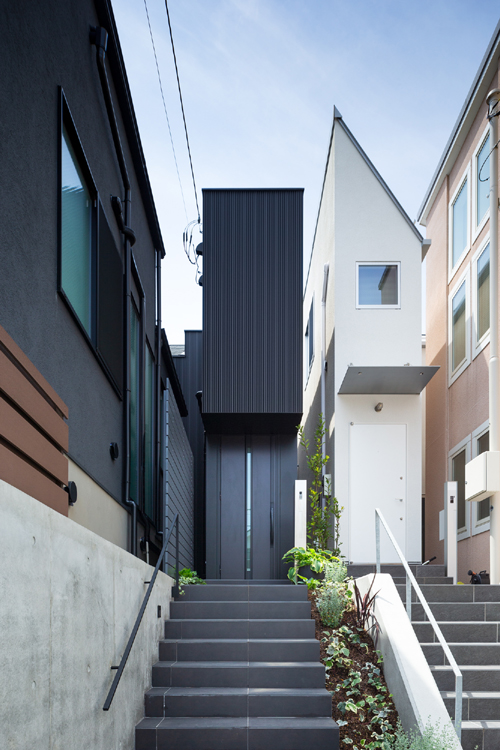
Jewel by Apollo Architects & Associates
Jewel by Japanese architecture firm Apollo Architects & Associates is another instance of a skinny house slotted into a tiny plot of land. Situated in Tokyo, Japan, it features a stark black façade made of galvanised steel sheets and minimalist bright white interiors filled with natural light flowing in through a series of skylights. This visual contrast helps help create a feeling of openness upon entering this 80 sqm residence.
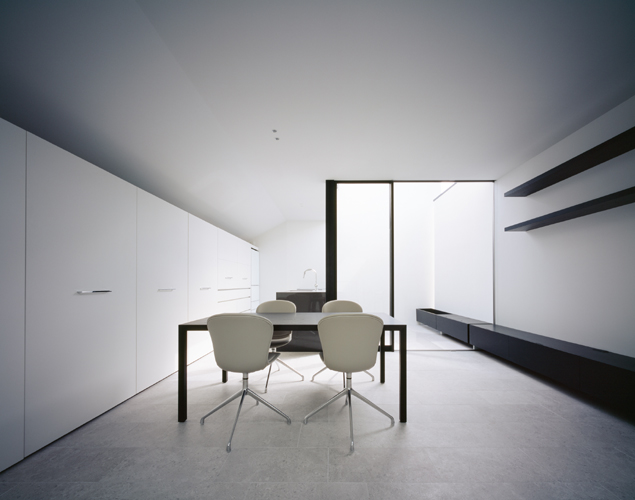
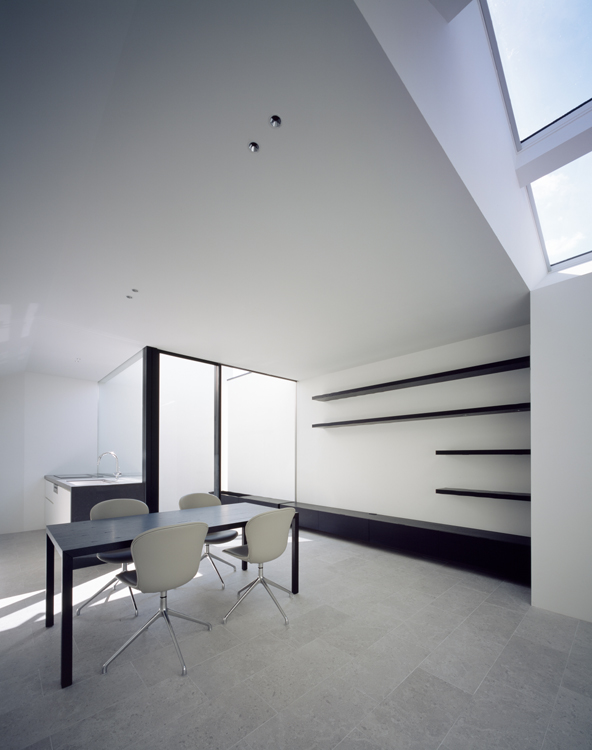
Jewel by Apollo Architects & Associates
The L-shaped floorplan of the house was dictated by the limitations of the site. Following the clients’ wish to have a private zone on the ground floor and a more public area on the first floor, the architects have placed two bathrooms, a master bedroom and the child’s bedroom on the lower level of the building.
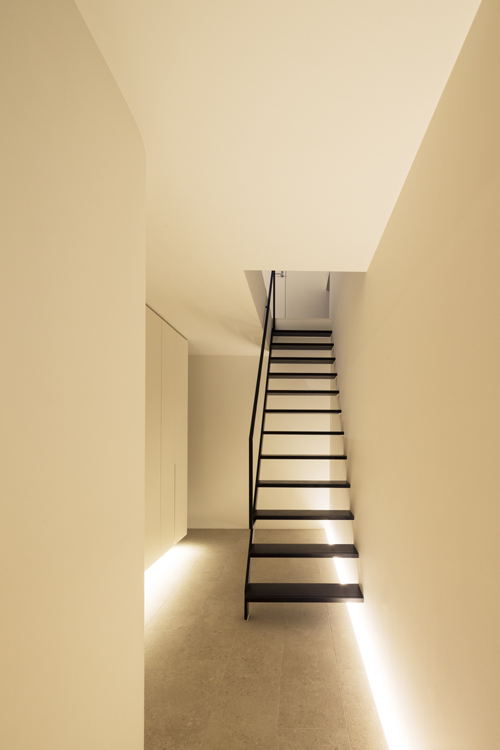
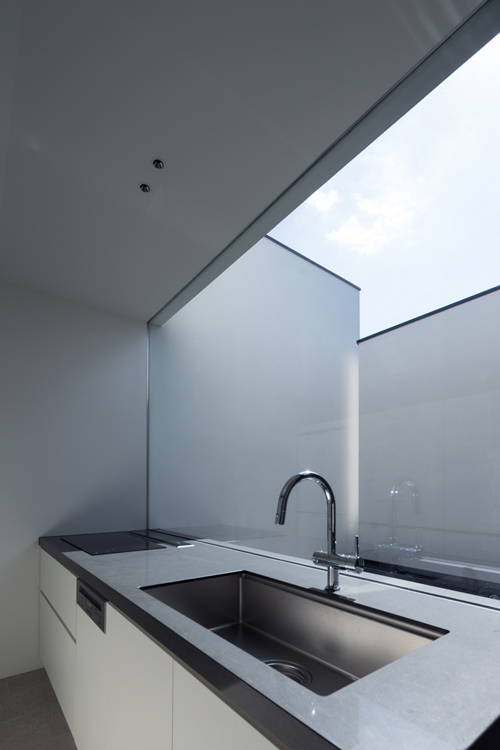
Jewel by Apollo Architects & Associates
Accessed by an open-tread staircase is the upper level, which includes an open plan living, dining and kitchen area, as well as a balcony that feels to be an extension of the living spaces. To make the space feel bigger, the architects have used the same ceramic flooring for both the balcony and the living quarters.